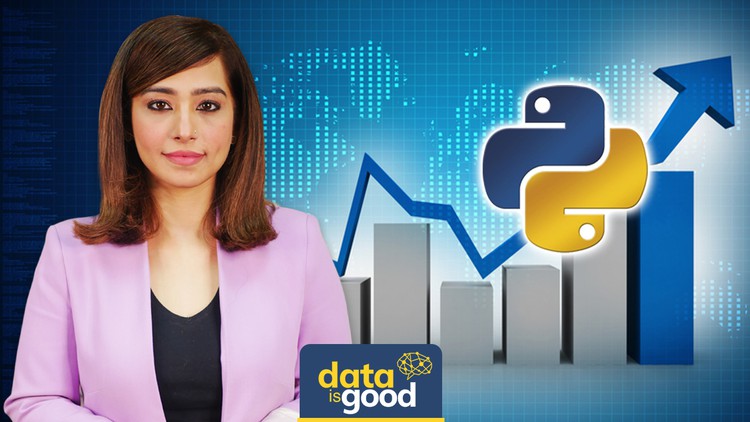
Python Time Series Analysis with 10+ Forecasting Models including ARIMA, SARIMA, Regression & Time Series Data Analysis
What you will learn
What is Time Series Data, it’s applications and components.
Fetching time series data using different methods.
Handling missing values and outliers in a time series data.
Decomposing and Splitting time series data.
Different smoothing techniques such as Simple Moving Averages, Simple Exponential, Holt and Holt-winter Exponential.
Checking Stationarity of the time series data and Converting Non-stationary to Stationary.
Auto-regressive models such as Simple AR model and Moving Average Model.
Advanced Auto-Regressive Models such as ARMA, ARIMA, SARIMA.
Evaluation Metrics used for time series data.
Rules for Choosing the Right Model for time series data.
Description
The Ultimate Course on Time Series Analysis in Python brings you expertise in Forecasting Models, Regression, ARIMA, SARIMA and Time Series Data Analysis with Python
Do you want to know how meteorologists forecast weather?
Do you want to know how retailers reduce excess inventory and increase profit margin?
Predict the future using Time Series Forecasting!
Time series forecasting is all about looking into the future.
Time Series is an important field in statistical programming. It allows you to analyze:-
1. Trends
2. Seasonality
3. Irregularity
Time Series Analysis has tons of applications such as stock market analysis, pattern recognition, earthquake prediction, census analysis and many more.
Due to the advanced modern technologies, the data is growing exponentially and this data can be used to modelled for the future which can really make a big difference.
You are at the right place!
Welcome to this online resource to learn Time Series Analysis using Python.
This course will really help you to boost your career.
This course begins with the basic level and goes up to the most advanced techniques step by step. Even if you do not know anything about time series, this course will make complete sense to you.
In this course you will learn about the following:-
1. What is time series data, its applications and components.
2. Fetching time series data using different methods.
3. Handling missing values and outliers in time series data.
4. Decomposing and splitting time series data.
5. Different smoothing techniques such as simple moving averages, simple exponential, holt, and holt-winter exponential.
6. Checking stationarity of the time series data and converting non-stationary to stationary.
7. Auto-regressive models such as simple AR model and moving average model.
8. Advanced auto-regressive models such as ARMA, ARIMA, SARIMA.
9. ARIMAX and SARIMAX model.
10. Evaluation metrics used for time series data.
11. Rules for choosing the right model for time series data.
All the mentioned topics will be covered theoretically as well as implemented in code.
You will compare all the models and will see how to read the results.
We will work with real data and you will have access to all the resources used in this course.
This course is for everyone who wants to master time series and become proficient in working with real-life time-based data.
For taking up this course you need to have prior knowledge of Python programming.
But wait!
Here is the surprise!!
If you are not aware of the python programming language then also don’t worry.
We have a crash course in python for you. You can take up python’s crash course and then proceed with the time series analysis.
Content